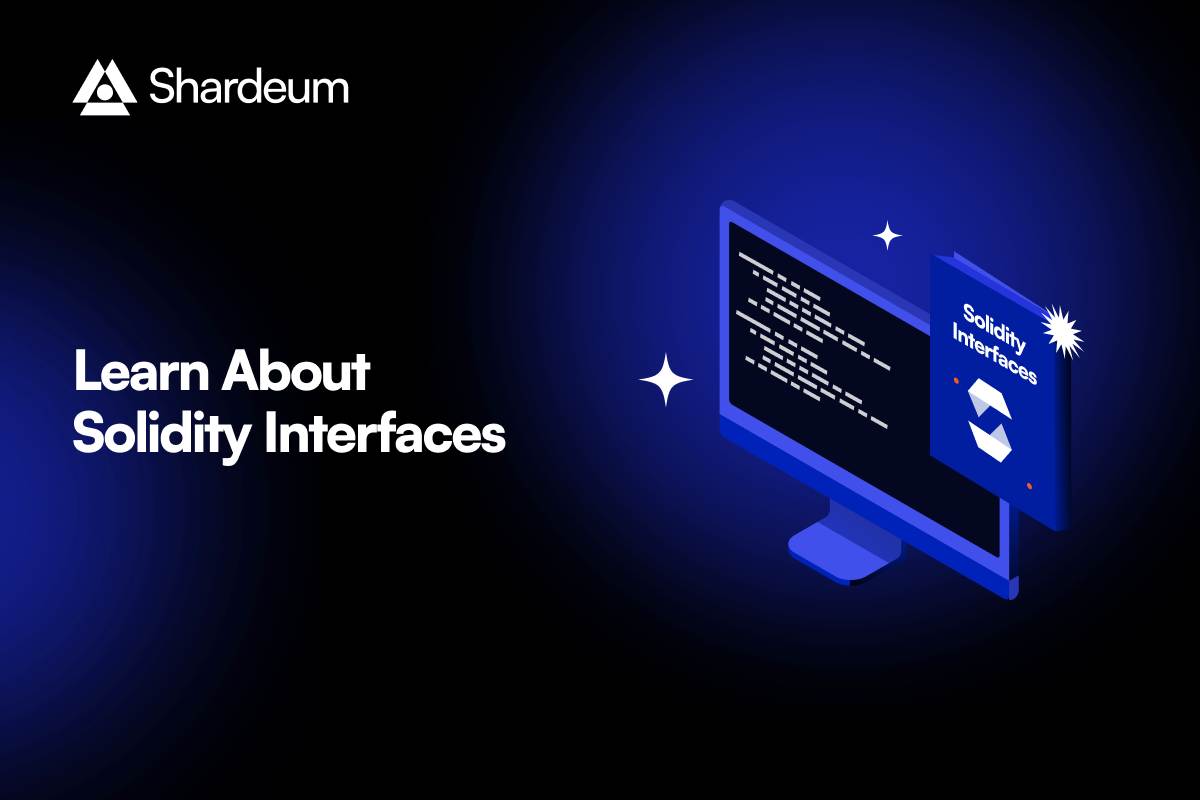
What is Solidity interface? – Explained
Solidity allows you to interact with other contracts without having their code by using their interface. Learn more about what is solidity interface in...

Solidity allows you to interact with other contracts without having their code by using their interface. Learn more about what is solidity interface in...
What is Solidity Interface? In the world of blockchains, Solidity interfaces unlock the gates to seamless collaboration within the Ethereum ecosystem. In this post, we find answers: what is Solidity interface, how to use interface in Solidity, and what the Solidity interface characteristics are!

Solidity interface serves as a blueprint, defining a set of function declarations that contracts must adhere to within the Ethereum ecosystem. Solidity interfaces allow contracts to communicate and collaborate effortlessly, fostering interoperability.
By specifying function names, parameter types, and return types without implementing the actual code, Solidity interfaces enable contracts to interact seamlessly with one another and external entities. They provide a common language of interaction, facilitating the development of complex systems on the Ethereum blockchain.
How to use interface in Solidity?
Solidity interfaces have specific requirements to ensure their effectiveness in facilitating contract interoperability. Firstly, interfaces must be defined using the interface keyword followed by a name. They should declare the functions and events to which implementing contracts must adhere, including the function signatures and return types. It’s crucial to omit the implementation code within the interface. The functions declared in the interface must be declared as external.
Implementing contracts must use the implements keyword followed by the interface name to indicate compliance. By meeting these requirements, Solidity interfaces establish a common language of interaction, enabling seamless communication and collaboration between contracts.

The Solidity interface characteristics make them a powerful tool for contract interoperability. First, they act as a contract blueprint, defining a set of function declarations without implementation details. Solidity interfaces enable contracts to communicate seamlessly by specifying function names, parameter types, and return types. They provide a standardized interface for contracts to interact without needing to know the internal workings of each other.
Solidity interfaces are external-facing, making them accessible for external entities to interact with contracts. By adhering to these characteristics, Solidity interfaces foster contract compatibility, facilitate collaboration, and promote a modular approach to contract development on the Ethereum blockchain.
Solidity interfaces can be illustrated through various examples showcasing their versatility. One example is an ERC20 token interface, defining functions like transfer, balanceOf, and approve that other contracts can implement to interact with the token contract.
Another example is a contract registry interface, providing functions like registerContract and getContractAddress for contracts to register and retrieve contract addresses dynamically.
Interfaces can also be used for oracles, defining functions like getData or updateData to fetch or provide external data to smart contracts. These examples demonstrate how Solidity interfaces enable standardized interaction and contract interoperability in diverse scenarios.
So, how to use interface in Solidity? Implementing an interface in a Solidity contract involves a straightforward process.
Implementing contracts must provide the required functionality within these functions. The contract establishes compatibility by adhering to the interface’s structure, enabling seamless interaction with other contracts that adhere to the same interface.
Solidity interfaces are pivotal in smart contracts, enabling seamless communication and collaboration. Interfaces foster interoperability between contracts by providing a standardized blueprint of function signatures. They allow contracts to interact without exposing internal implementation details, promoting modularity and code reusability.
With Solidity interfaces, contracts can adhere to a common language, facilitating contract compatibility and easing integration within complex systems. Whether it’s defining token interfaces, contract registries, or oracles, interfaces play a vital role in harmonizing contracts and empowering decentralized applications.
Interfaces in blockchain, specifically in Solidity, define a set of function declarations without implementing their functionality. They serve as blueprints or contracts that other contracts can adhere to, enabling interoperability and standardized communication between contracts on the blockchain.
Solidity is the language of choice for smart contracts on Ethereum and many other blockchain platforms. It allows developers to define the logic and behavior of decentralized applications (dapps) and smart contracts, facilitating the execution of trustless and decentralized transactions and interactions on the blockchain.
In the context of Solidity, an interface contract defines a set of function declarations without providing the implementation code. It specifies the external-facing interface that other contracts must adhere to when interacting with it. Interface contracts act as communication bridges, allowing contracts to interact seamlessly based on the defined function signatures.
In Solidity, inheritance is a mechanism where a contract inherits another contract’s state variables and functions, enabling code reuse and extending functionality. Interfaces, conversely, define function declarations without implementation and serve as a blueprint for contracts to adhere to. Inheritance is used for code reuse and extending contracts, while interfaces are used for standardizing communication and achieving contract interoperability.
Layer 1 Blockchain | Best Crypto Youtube Channels | Ordinals NFTs | What are EVM Compatible Blockchains | Best Decentralized Storage Networks | What is Consortium Blockchain | Difference Between Cryptocurrency and Blockchain | Best Crypto Faucets | Physical Layer in OSI Model | Advantages and Disadvantages of Decentralization | Throughput Vs Bandwidth | What is Hashrate | What Is Tokenomics | Work at Shardeum | CBDC Efforts Worldwide | What are Soulbound Tokens | What is AMM in Crypto | DDoS Mitigation | What is a Dao Crypto | How to Make and Sell NFT | 51% Attack | RPC Node | Bitcoin Layer 2 | Top Crypto Influencers | Best Asic Miners